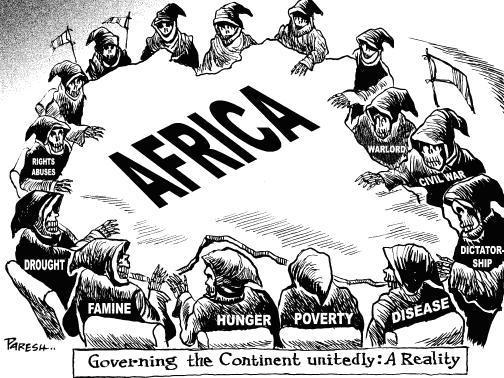Let's discuss the political cartoon depicting the Scramble for Africa. It's a powerful tool. It helps visualize complex historical events.
Understanding the Cartoon
Political cartoons use satire and symbolism. They convey a message about a specific event or issue. The Scramble for Africa cartoons often depict European leaders. They are greedily carving up the African continent. This visual metaphor is very effective.
Common Elements
Look for key elements. These frequently include European leaders around a table. They use knives or other tools to divide Africa. Africa itself is often represented as a cake or a map. This emphasizes the European powers' desire to exploit the continent's resources. Pay attention to the expressions on the faces of the figures. Are they eager, determined, or indifferent?
Animals are sometimes present in these cartoons. A lion might represent Britain. An eagle might symbolize Germany. These animal symbols add another layer of meaning to the image. They illustrate the national identities of the colonizers.
Teaching the Scramble for Africa
Introducing the Scramble for Africa can be daunting. Begin by providing context. Explain the concept of imperialism. Imperialism is when a strong nation seeks to dominate a weaker one.
Background Information
Discuss the motivations behind European imperialism. This includes economic factors, political ambitions, and social ideologies. The Industrial Revolution fueled the demand for resources. European nations wanted to expand their power and influence. Social Darwinism, a flawed ideology, contributed to racist justifications. Some Europeans believed they were racially superior. This "justified" their domination of other races.
Using the Cartoon in Class
Show the cartoon to your students. Don't immediately explain everything. Ask them to describe what they see. Encourage them to interpret the symbols and the actions of the figures. What message do they think the cartoonist is trying to convey? Facilitate a class discussion. This helps them develop critical thinking skills. Use guiding questions to encourage deeper analysis. “What do the animals signify?” "What does the division of the 'cake' suggest about Europe’s attitude toward Africa?"
Consider using multiple cartoons from different sources. Comparing and contrasting them can reveal different perspectives and biases. Some cartoons might be more critical of imperialism than others.
Addressing Misconceptions
Students often have misconceptions about the Scramble for Africa. They might think that Africa was an empty, unclaimed territory. Stress that Africa was home to diverse and complex societies. These societies had their own political systems, cultures, and economies. Europeans often exploited existing rivalries among African groups to gain control.
Another misconception is that all Africans passively accepted colonial rule. Highlight instances of resistance. Explore the stories of African leaders who fought against European domination. Emphasize that the consequences of colonialism are still felt today.
Making it Engaging
Bring the topic to life. Incorporate interactive activities. Simulations and role-playing can engage students.
Role-Playing
Assign students roles as European leaders or African representatives. Have them debate the merits and drawbacks of colonization. This will give them a deeper understanding of the different perspectives involved. Students could prepare short speeches. They represent the goals of their assigned country or the defense of an African nation.
Simulations
Create a simplified simulation of the Berlin Conference. Assign countries to students. Have them negotiate the division of a blank map representing Africa. This activity makes the political aspect of the Scramble for Africa more tangible.
Primary Source Analysis
Go beyond textbooks. Include primary sources. These are accounts from the time period. Letters from missionaries or explorers, speeches from African leaders. These will enhance student understanding. Help students learn to interpret these documents critically. Ask them to consider the author's perspective and possible biases.
Visual Aids and Multimedia
Use maps, photographs, and videos. These provide visual context. Show images of African societies before colonization. Contrast them with images of colonial infrastructure. This helps illustrate the impact of European rule. Use short documentary clips. These are readily available online and can enhance engagement.
Assessment
Assess students' understanding in various ways. You can have them write an essay analyzing a political cartoon. Ask them to compare different perspectives on the Scramble for Africa. You could also ask them to create their own political cartoon. They should express their understanding of the topic. A research project on a specific African nation's experience with colonization is another good assessment.
The Scramble for Africa is a complex and important topic. Teach it with sensitivity and accuracy. Emphasize the impact it had on Africa. It shaped the continent's political landscape. It continues to affect its economic development. By utilizing political cartoons, primary sources, and interactive activities, you can make this topic both engaging and meaningful for your students.

